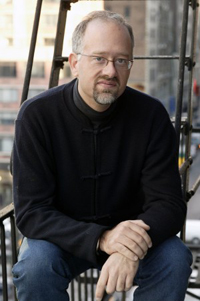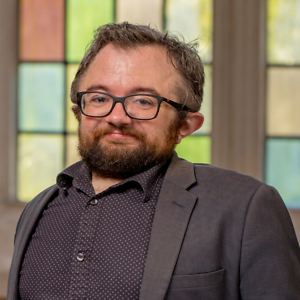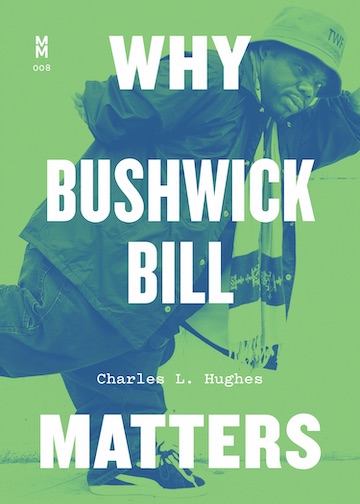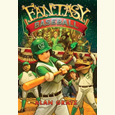Capturing Enigma
Pulitzer Prize-winning playwright Doug Wright debuts his new drama at the Ingram New Works Festival in Nashville
Among theater-lovers, celebrated playwright Doug Wright is best known for I Am My Own Wife, which won both a Tony Award for Best Play and the Pulitzer Prize—a play that Wright has called the “portrait of an enigma.” But he is also author of such diverse works as Quills (his Obie-winning play about the Marquis de Sade) and the Broadway version of The Little Mermaid. In his latest play, Posterity, now in rehearsal for the Ingram New Works Festival at Tennessee Repertory Theatre in Nashville, Wright offers a thoughtful look at a pair of remarkable artists concerned with their own legacies.
 In Henrik Ibsen, Wright has discovered another enigma, and he beautifully dramatizes the contradictions in the life and work of this brilliant playwright. Wright’s Ibsen, the father of dramatic realism, is at the end of his life, and the City of Oslo has commissioned a bust of him by Gustav Vigeland, a sculptor. Vigeland is uneasy about accepting the commission—Ibsen is notoriously difficult—but the prestige of creating the last permanent bust of Norway’s most revered citizen wins out over the unpleasant personality of the subject. Vigeland knows that Ibsen’s bust could immortalize both the author and the sculptor. More importantly, he feels certain it will lead to more commissions. In other words, Vigeland is networking. The clashing egos of these two artists create much of the play’s dramatic tension, and their verbal battles do not disappoint.
In Henrik Ibsen, Wright has discovered another enigma, and he beautifully dramatizes the contradictions in the life and work of this brilliant playwright. Wright’s Ibsen, the father of dramatic realism, is at the end of his life, and the City of Oslo has commissioned a bust of him by Gustav Vigeland, a sculptor. Vigeland is uneasy about accepting the commission—Ibsen is notoriously difficult—but the prestige of creating the last permanent bust of Norway’s most revered citizen wins out over the unpleasant personality of the subject. Vigeland knows that Ibsen’s bust could immortalize both the author and the sculptor. More importantly, he feels certain it will lead to more commissions. In other words, Vigeland is networking. The clashing egos of these two artists create much of the play’s dramatic tension, and their verbal battles do not disappoint.
Prior to his participation in the Ingram New Works Festival in Nashville, Doug Wright answered questions from Chapter 16 via email.
Chapter 16: In conceiving Posterity, which scene did you imagine first?
Doug Wright: I was visiting the studio of the Norwegian sculptor Gustav Vigeland in Oslo, which has now been transformed into a museum. I stumbled across six plaster studies the artist made for a proposed bust of Henrik Ibsen. The first was robust, with full muttonchops, and Ibsen’s expression was one of furious consternation. In the second, Ibsen looked smaller somehow, and less angry. In the third, his hair had thinned and his cheeks were hollow. The sixth and last was little more than a death mask. I subsequently learned that the great playwright had agreed to sit for Vigeland, but after their first meeting he suffered a stroke. Every time Vigeland would arrive at Ibsen’s apartment in Arbiensgate, Ibsen’s physiognomy had changed. Illness was quite literally ravaging his face. Regrettably, the sculptor was never able to finalize the bust, but he ended up with something even more remarkable: a record of one of the nineteenth century’s most influential writers marching toward his own grave. I can’t say I imagined a scene per se, but when I saw those six plaster likenesses, I knew I’d discovered a subject for a play.
Chapter 16: Although you haven’t written Posterity in the documentary style of I Am My Own Wife, research clearly played a very important part in the writing process. What sort of research was involved?
Wright: I travelled to Norway several times to study Vigeland’s work. Obviously, I’ve been spending a lot of time with Ibsen’s oeuvre, and the notable texts about him, from George Bernard Shaw’s famous appreciation to the masterful biography by Michael Meyer. And I’ve been working with a terrific Ibsen Scholar named Yoni Oppenheim; he actually has a degree from Norway in Ibsen Studies! He’s been an invaluable guide and has steered me toward the most influential and informative texts. Of course, at the end of the day, the play isn’t meant as nonfiction; it’s my own meditation on art and legacy and perhaps even death itself. So at some point I have to let my imagination fly.
Chapter 16: What challenges and surprises arose when trying to tell the story of a visual artist (especially a sculptor) through the tools of the stage?
Wright: I had to learn certain rudiments of the craft, like the way armatures work, and the various grades of clay available to artists. Vigeland’s work poses a particular challenge because many of his sculptures are massive; several times bigger than life-size. In the actual production of the play, I’d like to have some of those enormous works visible onstage. Suffice it to say, it’s a potential feast for a great team of designers.
Chapter 16: You give Ibsen the opportunity to consider the “perils of the profession” a century ago. Any twenty-first-century “perils” of play-writing you’d be willing to share?
 Wright: As challenging as it was for Ibsen, at least he was able to earn a living from his plays. In fact, by the end of his life, he was relatively wealthy. Unfortunately in our era, playwriting has become a hobby for most of us. We earn a living writing for film or television, then carve out sacrosanct time to pen plays. Who underwrites the American Theatre? Frankly, it’s the people who work in it. I know actors who slave away off-Broadway for four hundred dollars a week and make ends meet with residuals from TV commercials. Acting, writing, directing—they are rarely tenable professions these days, unless you’re wildly successful. Let’s face it: the theater is kept alive by diehard enthusiasts, impetuous dreamers and feverish, heartfelt aesthetes—the very people, I daresay, who work at Tennessee Rep!
Wright: As challenging as it was for Ibsen, at least he was able to earn a living from his plays. In fact, by the end of his life, he was relatively wealthy. Unfortunately in our era, playwriting has become a hobby for most of us. We earn a living writing for film or television, then carve out sacrosanct time to pen plays. Who underwrites the American Theatre? Frankly, it’s the people who work in it. I know actors who slave away off-Broadway for four hundred dollars a week and make ends meet with residuals from TV commercials. Acting, writing, directing—they are rarely tenable professions these days, unless you’re wildly successful. Let’s face it: the theater is kept alive by diehard enthusiasts, impetuous dreamers and feverish, heartfelt aesthetes—the very people, I daresay, who work at Tennessee Rep!
Chapter 16: In Posterity, Ibsen describes the playwright’s job as both “ghastly” and “illuminating.” In your view, how has the role of the playwright changed since 1901?
Wright: Plays used to lie at the center of aesthetic and social discourse; they were the popular culture of their day. Playwrights were commentators on the mores, the politics and the burning social issues of the moment, and audiences made a habit of seeing the latest noteworthy work by their favorite scribes. Now, it all too often seems that playwrights are as relevant to the zeitgeist as Gothic stone carvers or candle-makers. If you say you’re a playwright at a cocktail party, people are usually somewhat baffled; it’s like saying you work in stained glass.
Meanwhile, attending the theater is no longer something that every cultured or engaged person does; it’s a once-a-year event on Mother’s Day, or a way to celebrate a particularly ominous birthday. The audience demographic is becoming increasingly stagnant. And as ticket prices climb ever higher, the theater becomes increasingly rarified, available only for a cultured few. That’s when it begins to lose its relevance in the larger sphere. Producing theater stops feeling vital and immediate, and starts to feel akin to curating a museum.
Chapter 16: In a small cast, you manage to show artists from three different generations. What has been the most important legacy you’ve inherited, and what would you like your own legacy to be?
 Wright: I’m not being cheeky or flip when I say that if I knew the answers to those questions, I wouldn’t feel the overwhelming need to write this play. When we choose a particular topic to investigate as writers, we’re always interested in our ostensible subject: the life of Ibsen, the life of Vigeland, their prophetic meeting, etc.—but we’re also writing in hopes of answering the vexing questions that lurk in our own hearts. Is my work a sufficient legacy to leave behind, in the absence of children? Will it weather the years beyond me? Does it connote a life well lived? I’m haunted by these queries; I think we all are. Hopefully, they give the play resonance.
Wright: I’m not being cheeky or flip when I say that if I knew the answers to those questions, I wouldn’t feel the overwhelming need to write this play. When we choose a particular topic to investigate as writers, we’re always interested in our ostensible subject: the life of Ibsen, the life of Vigeland, their prophetic meeting, etc.—but we’re also writing in hopes of answering the vexing questions that lurk in our own hearts. Is my work a sufficient legacy to leave behind, in the absence of children? Will it weather the years beyond me? Does it connote a life well lived? I’m haunted by these queries; I think we all are. Hopefully, they give the play resonance.
Chapter 16: As foils, Ibsen and Vigeland often point out each other’s contradictions. Do you see these contradictions in any way as universal symptoms of the human condition?
Wright: Young writers often worry if their characters are written consistently; as we get older, we learn that people are rarely—if ever—truly consistent. We are the sum of our contradictions. Ibsen himself wrote one of the most maddeningly inconsistent, impetuous, contradictory characters in all of Western literature: Hedda Gabler. Actresses have been trying to figure her out for well over a hundred years. It’s her irreconcilability that makes her fascinating and allows her to endure multiple interpretations over many, many productions. In truly great writing, characters are as hard to pigeonhole on the page as they are in life. No one is simple.
Chapter 16: At this point in the process, how is the workshop environment helpful for a new work?
Wright: The role of any workshop is the same; you enter the rehearsal room with not one but two plays. The first is the brilliant, seamless, and shattering play that exists in your mind. The second is the play that’s actually written on the page: often morose and unhappy scribblings unfettered by either reason or artistry. The purpose of the workshop is to bring those two very different scripts into accord. I’m grateful to the formidable artistic minds at Tennessee Rep for giving me this tremendous opportunity. They’re going to teach me exactly what it is that I have written, and I’m very eager to learn.
The Ingram New Works Festival runs May 7-17, 2014, at Tennessee Repertory Theatre in Nashville. Doug Wright’s Posterity will be performed May 15-17, 2014, at 7 p.m. Tickets are free for season subscribers, $5 for students and actors, and $10 for general audience. Mention HUMANITIES TENNESSEE when ordering tickets for a fifty-percent discount to any performance at the Ingram New Works Festival.





